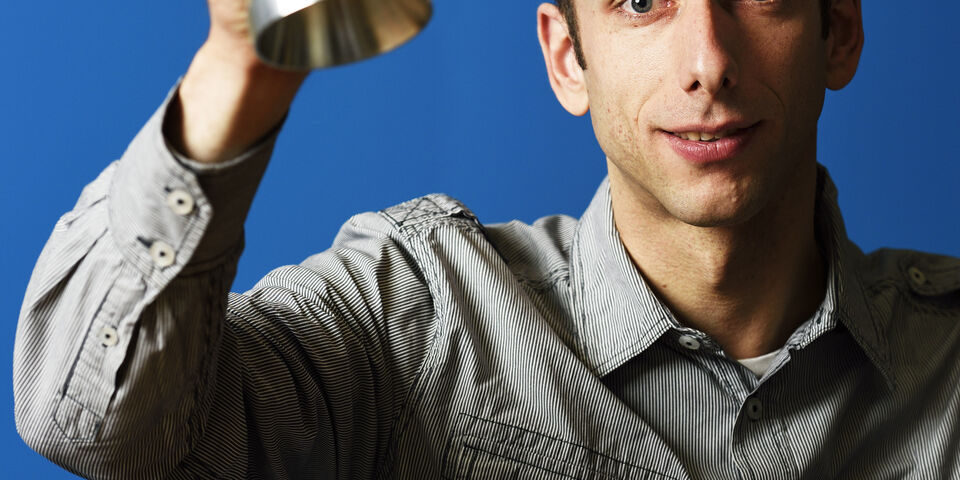Wireless energy transfer, so that you can charge your mobile phone without any cords. It does exist, but actually only for very short distances, Maurice Roes explains. This is because inductive energy transfer – whereby the energy is transferred from the transmitter to the receiver in electromagnetic form – only works properly for distances not much greater than the size of the receiver. “Such inductive systems may be perfectly fine for charging electric toothbrushes in their holders, but if you want to recharge the battery of a pacemaker without performing any surgery, you would have to fit it with a five-centimeter-long coil.”
Still, energy may also be transferred acoustically, in the form of sound waves - which may or may not be audible. “The benefit of that is that you can focus sound, which allows you to bridge much greater distances without too many losses.” Acoustic energy transfer had only been researched sparsely, and at Electromechanics and Power Electronics they rather fancied the idea, and considered it worth a try. “In fact the principle is amazingly simple. Your transmitter can be a kind of loudspeaker that converts electric energy into acoustic vibrations, and the receiver is a kind of microphone that does the reverse.”
His colleagues were not all that pleased with Roes’ research subject, he says. “My first transmitter worked on a frequency of seventeen kilohertz. That enabled me to find out exactly whose sense of hearing was good. One colleague would come to me asking me to kill that infernal racket, whilst others informed with interest whether I was conducting measurements.”
It is by no means easy to transfer the energy through the air efficiently. The biggest problem is that air is a rather rarefied medium, much lighter than the receiver - which in Roes’ case was made of piezo-electric ceramic. “Due to that difference in density a large portion of the sound is reflected at the receiver, which all amounts to energy loss.” That is why energy transfer through a solid medium, such as a metal, works much better, he knows. “NASA has demonstrated that you can send even more than a kilowatt through metal.”
Roes managed to compensate for part of the loss due to reflection by equipping the transmitter and the receiver with horns - big contraptions - similar to the classic horns used in the past by persons hard of hearing. “Unfortunately it proved not to work as well as I had expected, particularly when the source and the receiver were located close to each other. It turns out to be surprisingly difficult to model this. The literature also comes up with hardly any useful models.”
Despite the fact that Roes eventually did not succeed in transferring more than 40 milliwatt acoustically - “just enough for a sensor or a microprocessor, while the goal was a few watt, which is enough to charge a telephone”, he has nonetheless become the global expert in this small area of expertise. “I get mails from all over the world from people who also want to get started on acoustic energy transfer.” And his PhD even landed him a job. He continues at Electromechanics and Power Electronics as university professor. In the field of power electronics, though: acoustic energy transfer will only occupy him as a sideline at most.


Discussion